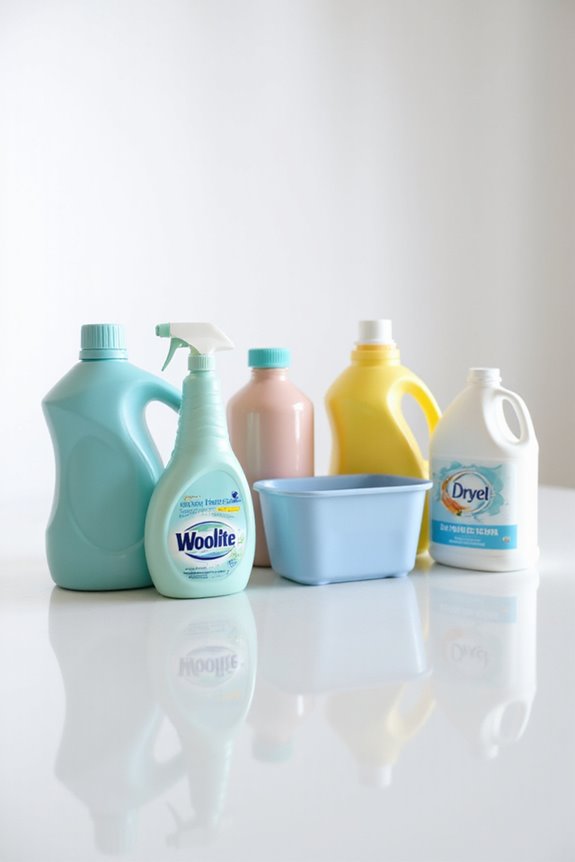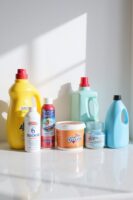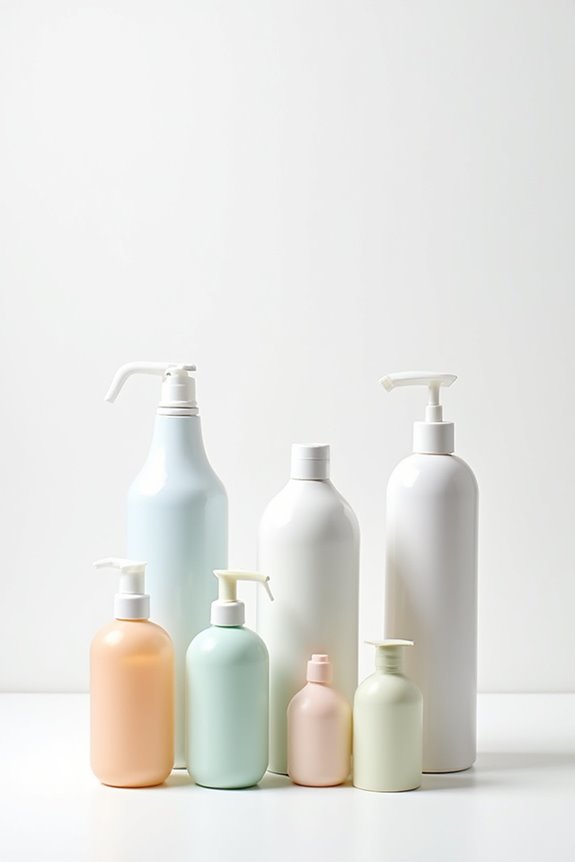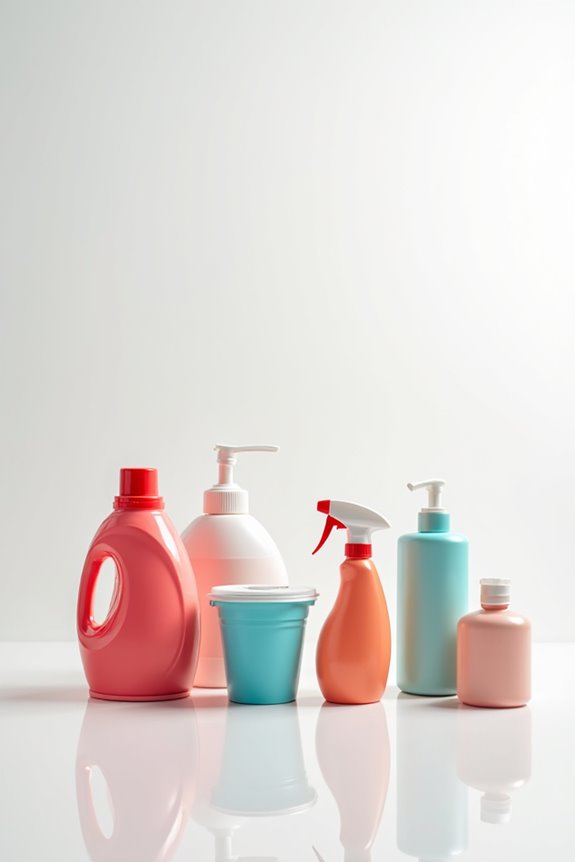Yes, detergent residue can cause skin allergies! Many common laundry detergents contain fragrances and surfactants, which can irritate our skin. We often notice symptoms like itching, redness, or even rashes, especially in areas covered by tight clothing. Choosing fragrance-free and hypoallergenic detergents can help reduce irritation. Testing products and keeping track of reactions can also make a big difference. Stick around, and we’ll explore more tips to keep our skin happy!
Key Takeaways
- Detergent residues can irritate the skin, leading to allergic reactions or contact dermatitis.
- Ingredients like fragrances, dyes, and surfactants can disrupt the skin barrier, causing irritation.
- Symptoms of detergent allergies include redness, itching, rashes, and dry patches on the skin.
- Fragrance-free and dye-free detergents are recommended for sensitive skin to reduce allergic reactions.
- Elimination testing with hypoallergenic detergents can help identify specific triggers for skin allergies.
Understanding Detergent Residue and Skin Allergies
When we think about our laundry, most of us probably picture fresh-smelling clothes, but what we might not realize is that those scents can come with a catch. Many detergent formulations contain fragrances, dyes, and surfactants that can disrupt our skin barrier. This means our skin can become irritated or even allergic over time. Have you ever noticed a rash after washing your favorite shirt? It could be those pesky residues left behind. Sodium lauryl sulfate, for example, is known to increase irritation risk. It’s wild how something so simple, like detergent, can affect us in ways we don’t expect. By choosing fragrance-free, dye-free options, we can help keep our skin happy and healthy! Additionally, using hypoallergenic detergents can significantly reduce the risk of skin irritation and allergic reactions.
Common Symptoms of Detergent Residue Allergies
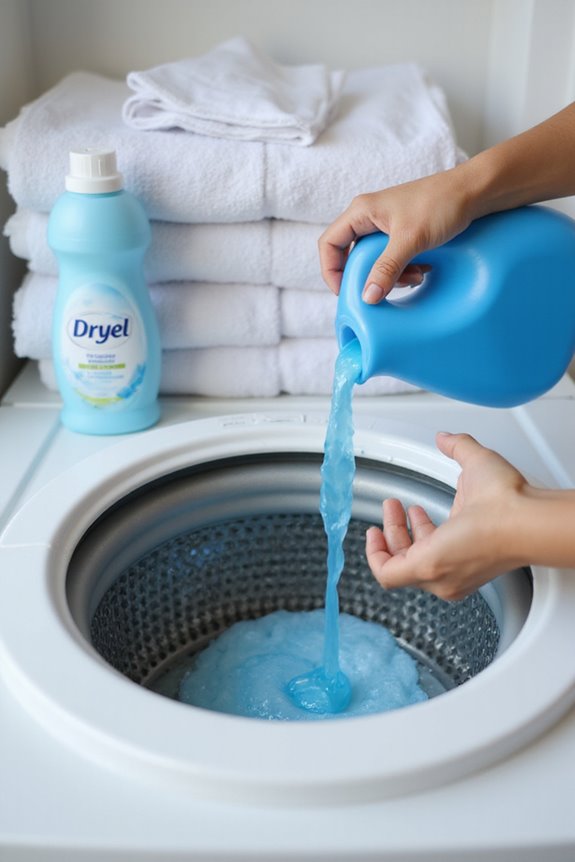
Have you ever wondered why your skin feels itchy or irritated after doing laundry? We might be experiencing common symptoms of detergent residue allergies. Skin irritation often shows up as redness in areas where our clothes fit tightly, like waistbands or underarms. Itching can make it hard to focus on anything else! Sometimes, we even notice dry patches or a burning sensation on our skin.
Allergic reactions may lead to rashes that appear right where our fresh laundry touches our skin. Hives can pop up suddenly, too, leaving us with raised welts. If we notice swelling and tenderness, it’s a good idea to take a closer look at the detergent we’re using—it could be the source of our discomfort! Switching to a hypoallergenic detergent may help reduce these symptoms and minimize skin irritation.
Types of Contact Dermatitis Linked to Detergent Residue
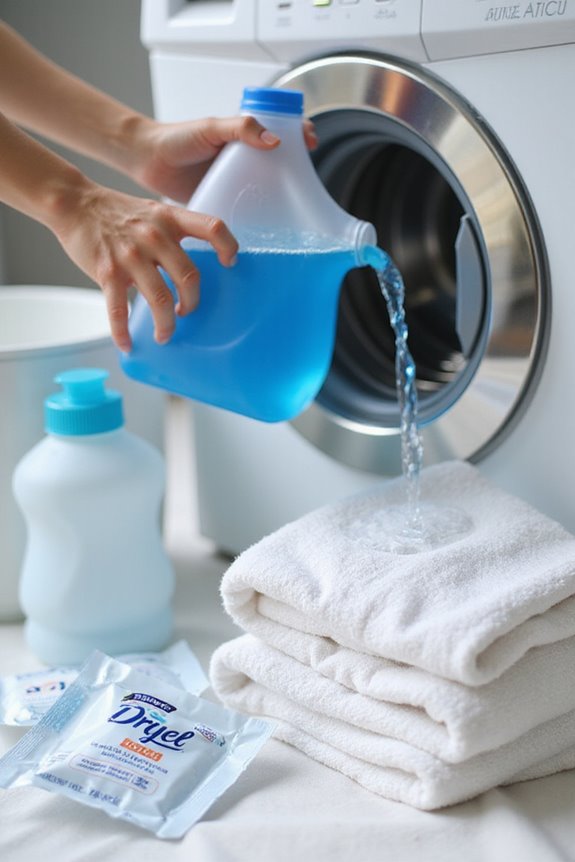
Understanding the types of contact dermatitis linked to detergent residue can help us tackle those pesky skin issues we sometimes face. There are mainly two types: irritant contact dermatitis and allergic contact dermatitis.
Irritant dermatitis, the most common, makes up about 80% of cases. It’s caused by direct chemical irritation from harsh detergent composition, like strong surfactants. Frequent handwashing can strip our skin barrier, making us more vulnerable.
On the other hand, allergic contact dermatitis is rarer, affecting about 20% of us. It happens due to an immune response to specific allergens in detergents. This reaction can take 24 to 72 hours to show up, which can be super frustrating!
Knowing these types can help us choose better products and protect our skin. Using hypoallergenic detergents can be an effective way to minimize the risk of irritation and allergic reactions.
Allergenic Ingredients in Laundry Detergents
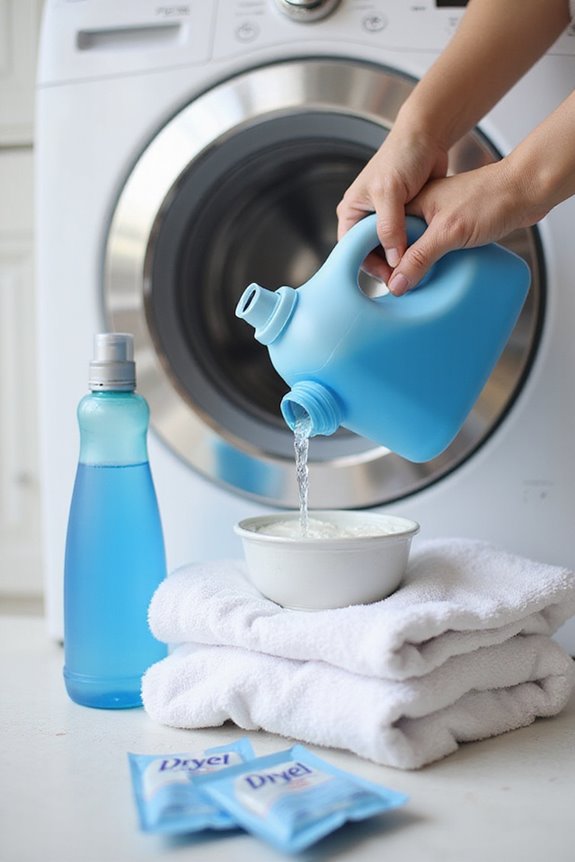
While we might not think about it often, the ingredients in our laundry detergents can really affect our skin. Many detergent formulations include phthalates, which are notorious for causing skin rashes and allergic reactions in sensitive individuals like us. Not to mention, those artificial fragrances often hide a cocktail of undisclosed chemicals, making it tricky to pinpoint our triggers. We’ve also got dyes and fabric softeners, which can lead to irritation and, let’s be honest, who wants itchy skin? If we’re dealing with chemical sensitivities, it’s smart to look for fragrance-free or dye-free options. By choosing wisely, we can help keep our skin happy and healthy! Additionally, opting for products labeled free and clear can significantly reduce the likelihood of irritation caused by harsh chemicals.
Risk Factors for Developing Detergent Allergies
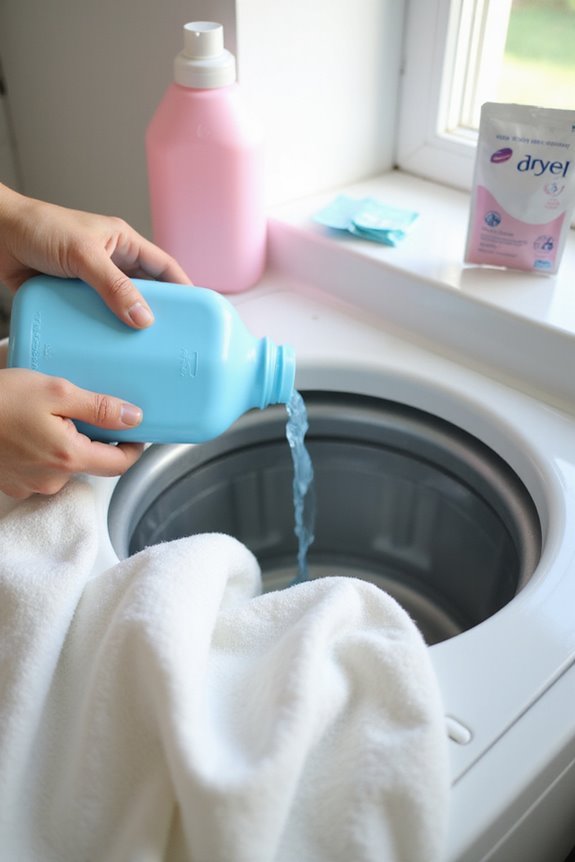
When we think about the risk factors for developing detergent allergies, it’s easy to overlook how common habits can play a big role. First off, there’s our genetic predisposition. If allergies run in the family, we’re more likely to develop reactions ourselves. Then, we have environmental factors—things like dry skin or irritants that can make our skin more sensitive.
Frequent contact with detergent residue can also wear down our skin barrier, increasing the chance of allergic responses. It’s like a cumulative effect; even small exposures can add up. Plus, infants are particularly vulnerable due to their immature skin. So, let’s be mindful of what we use and how often we expose our skin to these products! Additionally, using fragrance-free detergents can significantly reduce the risk of irritation and allergic reactions for sensitive skin.
How Fragrance and Surfactants Contribute to Skin Reactions
Many of us don’t realize how much fragrance and surfactants in our detergents can harm our skin. Fragrance sensitivity is more common than we think, with synthetic fragrances often hiding allergens we can’t identify. Even a tiny bit of residue can spark reactions like red, itchy rashes. Surfactants, too, can cause surfactant irritation by damaging our skin’s protective barrier. They’re great at cleaning, but sometimes they clean a little too well. This can lead to dryness and make our skin more likely to react with allergens. If we’re experiencing discomfort after washing our clothes, it might be time to check our detergent labels. Trust me, our skin will thank us for it! Choosing fragrance-free products can significantly reduce the risk of allergic reactions.
Management Strategies for Detergent Allergy Symptoms
Managing detergent allergy symptoms can feel overwhelming, especially when it seems like every laundry day brings new challenges. We can start with elimination testing, switching to hypoallergenic detergents without dyes or fragrances. Keeping a diary of products and reactions helps us find the culprits. Alongside this, lifestyle changes like using fragrance-free moisturizers can strengthen our skin barrier.
When symptoms flare, topical corticosteroids or oral antihistamines can relieve itching. Oatmeal baths are a soothing treat for our skin, too! Remember, it’s important to wash affected areas promptly after exposure. If symptoms persist, we should consult a healthcare professional for tailored advice. With patience and some detective work, we can manage our detergent allergies and enjoy laundry day again!
Preventing Detergent Residue Allergies in Daily Life
Preventing detergent residue allergies in our daily lives is all about being proactive and smart with our laundry habits. First, let’s consider using hypoallergenic and natural detergent alternatives, like soap nuts or homemade mixes with baking soda and vinegar. These options are gentler on our skin.
Now, here are some laundry tips: always use the right amount of detergent, and don’t forget that double rinse cycle! It’s like giving our clothes a spa day.
Also, we should wash new clothes before wearing them to eliminate pesky chemical residues. While doing laundry, wearing gloves can help avoid direct skin contact with allergens. Let’s keep our skin happy and our laundry fresh by following these easy steps together!
Frequently Asked Questions
Can Detergent Allergies Develop Suddenly After Years of No Issues?
Imagine waking up, your skin suddenly ablaze. We can develop detergent allergies out of the blue, even after years of no issues. Allergy triggers may sneak in, catching us off guard when we least expect it.
Are Natural Detergents Safer for Sensitive Skin?
When considering natural detergents, we find they often contain natural ingredients that minimize skin sensitivity. Their reduced chemical load can help protect sensitive skin, making them a safer choice for those prone to irritations.
How Long Do Symptoms of Detergent Allergies Last?
Did you know that allergic reactions can last anywhere from a few days to two weeks? For effective allergy management, understanding rash duration is essential, as prolonged exposure can greatly extend symptoms and discomfort.
Can Pets Be Affected by Detergent Residue on Clothing?
Yes, pets can be affected by detergent residue on clothing. We’ve seen that pet skin can react negatively, leading to allergic reactions like itching, redness, or inflammation from harmful chemicals lingering on fabrics.
Is It Possible to Test for Detergent Allergies?
Did you know nearly 20% of people experience allergic reactions to common products? We can identify detergent allergies through patch testing, which reveals specific allergy symptoms, helping us avoid irritants and improve our skin health.

